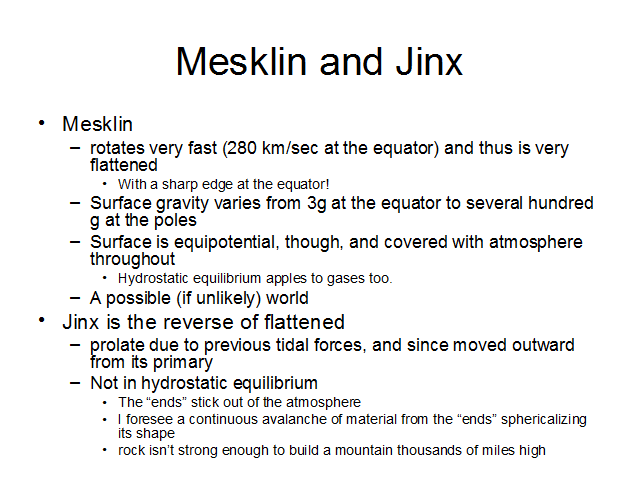
NOTES
Two famous SF examples of the balance or imbalance between centrifugal force and gravity are Mesklin from Clement's Mission of Gravity, and Jinx from Niven's "Known Space."
Mesklin's shape perfectly balances centrifugal force and gravity, even though the centrifugal force is very large indeed, leading to an equipotential shape with surface gravity that varies over two orders of magnitude (remember the distinction between along-surface force, and perpendicular force). The atmosphere of Mesklin covers the whole planet and also forms an equipotential surface, eliminating any tendency for atmosphere to move along the surface (on the large scale - winds still exist). So in the unlikely event that a planet could spin as fast as Mesklin, the description that Clement provides is quite accurate.
Jinx, however, is another story. It's prolate (football-shaped), not oblate, because previously in its existence it experienced large tides (from the gas giant it orbits). But in the “present day” it orbits well away from the gas giant where tides are much smaller, yet somehow retains its shape. This planet is relying on the strength of its material to keep in a shape not consistent with the combination of gravity and centrifugal force, and I am doubtful that it would last in that shape over geological time or even historical time (note that the ends of this planet actually stick out of the atmosphere because the atmosphere follows the gravity field).
